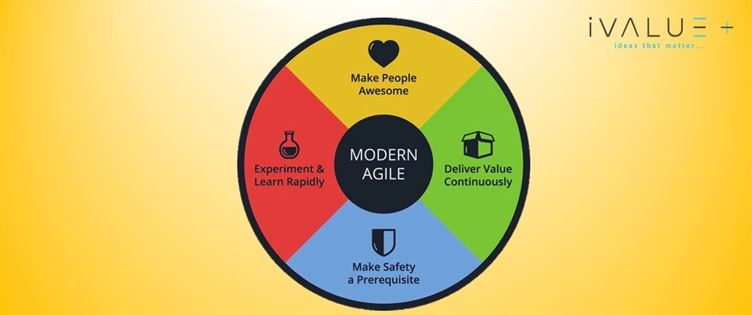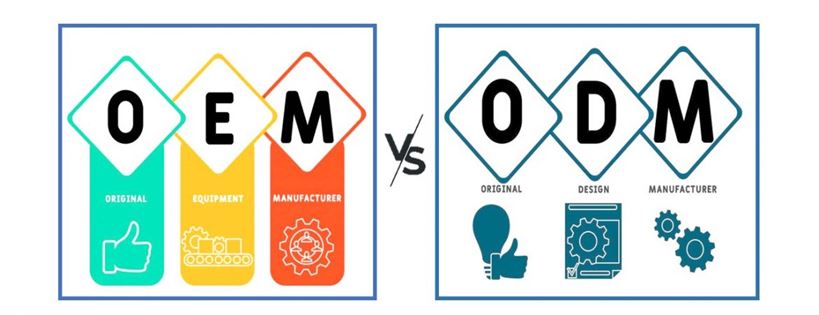
How Mobile applications can improve one’s work productivity, relationships with friends and family, and overall quality of life
July 1, 2020
What is Self-Improvement?
July 17, 2020Manage Risk
Every corporate face risk that could be detrimental to its success.
Risk can be understood as the probability of an event and its related consequences.
All the various processes, methods and tools for managing these risks come under Risk management.
Risk management highlights identification of things what could go wrong, evaluating the strategies to be used dealing with these kinds of risks and off course implementing these strategies to deal with such risks. All corporate houses who have a risk management plan in place are better prepared in case a situation arises and also have an effective & efficient way of dealing with such risks.
Let’s try to understand the following:
- How to identify these risks in your business
- Formulate and an effective risk management policy
- Implement a program which enhances the overall success rate of any business and reduces the failure chances.
The risk management process
Risk management process or plan enables any business to not only identify but also address the risks which can occur during any phase. It increases the success rate by ensuring that the businesses objectives & goals are met. Needless to say, that risk management plan should be devised and come under strategic management
The risk management process (RMP) involves the following steps:
- Identifying risks – Identification/Understanding the risks involved/could evolve by studying all the factors – internal as well as external related to the said business
- Analysing risks – Analysing how the business outcomes & objectives might change due to the impact of the risk event. It also includes the calibration and creation of probability distributions of outcomes for each risk.
Responding to risk – After identifying and analysing the potential risk for any business, appropriate plan/strategy needs to be incorporated. This can be done by the following steps (depending on kind and severity of the risk):
-
- Avoid
- Mitigate
- Transfer
- Accept
- Monitoring risk and opportunities – Continually monitoring & measuring the risk response plans, Track Identified Risks, Evaluate Risk Process Effectiveness and opportunities of the businesses.
The types of risk your business faces
The main categories of risk to consider are:
-
- Strategic Risk – chance that a strategy will result in losses. The following are examples
- Liability Risk.
- Marketing Risk.
- Change Management.
- Program Risk.
- Project Risk.
- Competitive Risk.
- Innovation Risk.
- Merger & Acquisition Risk.
- Operational Risk – Risks arising from catastrophic events. The following are examples
- Human Error
- Information Technology
- Lack of Processes
- Quality Risk
- Strategic Risk – chance that a strategy will result in losses. The following are examples
- Process failure
- Financial Risk – Risks faced by the business in terms of handling its finances. The financial risk ratios should be used to assess any prospect. The following are examples
- Credit risk
- liquidity risk
- asset-backed risk
- foreign investment risk
- equity risk
- currency risk
- Compliance Risk – Risks occurring due to non-compliance of industry laws and regulations, internal policies or prescribed best practices. The following are examples
- Environmental Risk.
- Workplace Health & Safety.
- Corrupt Practices.
- Social Responsibility.
- Quality.
- Process Risk
- Reputational Risk – Risks occurring due to negative publicity, public perception or uncontrollable events. The following are examples that could lead to such risks
- Accounting
- Information Technology
- Executive Management
- Quality Risk
- Operations
- Competitive Risk – Risks occurring due to negative publicity, public perception or any other uncontrollable event. The following are examples that could lead to such risks are
- Pricing
- Innovation
- Locations
- Promotion
- Intellectual Property
- Distribution
- Legal Risk – Risks occurring due to negligence in compliance with the laws related to any business. The following are different types of Legal risks
- Assets
- Regulatory Risk.
- Compliance Risk.
- Contract Risk.
- Non-contractual Rights & Obligations
- Dispute Risk.
All the above categories are not rigid and some parts of the business may fall into more than one category.
Other risks include:
- Geopolitical & environmental risks, force majeure including natural disasters
- employee risk management, political and economic instability
- health and safety risks
How to evaluate business risks
Risks are inherent to every environment and any business. The risks cannot be avoided and, therefore, must be addressed in order to minimize their impact.
Below are the four main steps to evaluate the risks:
- Identification
Risk identification is the main step and can be achieved by simply brainstorming the possible scenarios. You can gather the employees together in order to review all the sources of risk for your business. The next step is then to arrange all these identified risks in order of priority & severity. This ensures that risks which can affect a business significantly are dealt with immediate priority.
- Assessment
This can be done by following the below steps:
- Identify hazards, i.e. anything that may cause damage
- Decide who may be effected/harmed, and how.
- Assess the risks and take appropriate action.
- Make a record of the findings for future use.
- Review the risk assessment.
- Developing
- Develop preventive mechanisms for identified risks
-
- Action plan in case it reoccurs
How to manage risks
Business risk can originate from areas —internal to the business and from other external sources.
The best ways for any business to manage risk is to evaluate risk factors and make a contingency plan around it which highlights the steps to be taken in event of such a scenario across all the three categories of risks
-
- Category I: Preventable risks
- Category II: Strategy risks
- Category III: External risks
The following are six ways of managing risks in your business:
- Write a business plan
The process of creating a business plan is a vital step towards assessing, evaluating & planning for the risks associated with any business. The plan should cover all aspects like operations, finance, marketing & execution related to business. It should encompass the following:
-
- Executive summary — a snapshot of your business
- Company description — describes what you do
- Market analysis – research on your industry, market and competitors
- Organization and management — your business and management structure
- Service or product — the products or services you’re offering
- Marketing and sales — how you’ll market your business and your sales strategy
- Funding request — how much money you’ll need for next 3 to 5 years
- Financial projections — supply information like balance sheets
- Appendix — an optional section that includes résumés and permits
- Determine insurance needs and obtain coverage.
Depending on the business activities, you need to determine the other types of insurance and obtain the correct coverage for your business. Insurance will not reduce your business’ risks but you can use it as a financial tool to protect against losses associated with some risks.
You can use a business interruption policy to insure against loss of profit and higher overheads resulting from any internal factors. You may also want to consider:
- Products liability insurance – Is designed to pay for any compensation and legal costs that may arise from negligence or breach of duty by any employee of the business
- Group life assurance – Is provided by employers as part of a benefits package and pays out a lump sum to the employee’s family in case of any shortcoming.
- key man insurance – Is used to cover for the financial costs of losing any key personnel.
- Write a risk management plan
Create a risk management plan (Separate from your existing business plan), which lists all of the possible risks that can affect your business. This risk management plan also lists the steps, procedures & ways in which the business should react/deal with the risks as they arise. Other key components are:
- Definitions.
- Assumptions.
- Process
- Budget
- Risk Breakdown Structure.
- Probability Impact Matrix.
- Accuracy Estimates (cost & schedule)
- Roles & Responsibilities
- Risk Register.
Steps in developing a risk management plan (RMP) are as follows:
- Establish the basic approach and working structure
- Develop and document an overall risk management strategy
- Assign responsibilities for specific areas
- Describe the assessment/analysis process
- List potential risk and their impacts
- Develop mitigation strategies
- Establish reporting/tracking procedures
- Update plans.
Even the best of plans at times do not cover all the situations associated with any risk which can happen to your business so when it happens react accordingly and then edit/update your existing plan & procedure so that it can be used as a ready reference in case of any reoccurrence.
- Train employees
You should train your employees to not only understand the interpret the risk management plan but also how to deal with the situation when the risk occurs. This can help your business from damages.
- Sack and recruit employee
Demand sacking and recruiting new workers where necessary for the health of your business
Managing risk is very different from managing strategy. Risk management focuses on the negative—threats and failures towards the business rather than opportunities and successes of a business.
5 things to remember in order to manage business risk
- Accept the risk
- Avoid the risk
- Transfer the risk
- Mitigate the risk
- Exploit the risk
Every corporate face risk that could be detrimental to its success.
Risk can be understood as the probability of an event and its related consequences.
All the various processes, methods and tools for managing these risks come under Risk management.
Risk management highlights identification of things what could go wrong, evaluating the strategies to be used dealing with these kinds of risks and off course implementing these strategies to deal with such risks. All corporate houses who have a risk management plan in place are better prepared in case a situation arises and also have an effective & efficient way of dealing with such risks.
Let’s try to understand the following:
- How to identify these risks in your business
- Formulate and an effective risk management policy
- Implement a program which enhances the overall success rate of any business and reduces the failure chances.
The risk management process
Risk management process or plan enables any business to not only identify but also address the risks which can occur during any phase. It increases the success rate by ensuring that the businesses objectives & goals are met. Needless to say, that risk management plan should be devised and come under strategic management
The risk management process (RMP) involves the following steps:
- Identifying risks – Identification/Understanding the risks involved/could evolve by studying all the factors – internal as well as external related to the said business
- Analysing risks – Analysing how the business outcomes & objectives might change due to the impact of the risk event. It also includes the calibration and creation of probability distributions of outcomes for each risk.
Responding to risk – After identifying and analysing the potential risk for any business, appropriate plan/strategy needs to be incorporated. This can be done by the following steps (depending on kind and severity of the risk):
-
- Avoid
- Mitigate
- Transfer
- Accept
- Monitoring risk and opportunities – Continually monitoring & measuring the risk response plans, Track Identified Risks, Evaluate Risk Process Effectiveness and opportunities of the businesses.
The types of risk your business faces
The main categories of risk to consider are:
-
- Strategic Risk – chance that a strategy will result in losses. The following are examples
- Liability Risk.
- Marketing Risk.
- Change Management.
- Program Risk.
- Project Risk.
- Competitive Risk.
- Innovation Risk.
- Merger & Acquisition Risk.
- Operational Risk – Risks arising from catastrophic events. The following are examples
- Human Error
- Information Technology
- Lack of Processes
- Quality Risk
- Strategic Risk – chance that a strategy will result in losses. The following are examples
- Process failure
- Financial Risk – Risks faced by the business in terms of handling its finances. The financial risk ratios should be used to assess any prospect. The following are examples
- Credit risk
- liquidity risk
- asset-backed risk
- foreign investment risk
- equity risk
- currency risk
- Compliance Risk – Risks occurring due to non-compliance of industry laws and regulations, internal policies or prescribed best practices. The following are examples
- Environmental Risk.
- Workplace Health & Safety.
- Corrupt Practices.
- Social Responsibility.
- Quality.
- Process Risk
- Reputational Risk – Risks occurring due to negative publicity, public perception or uncontrollable events. The following are examples that could lead to such risks
- Accounting
- Information Technology
- Executive Management
- Quality Risk
- Operations
- Competitive Risk – Risks occurring due to negative publicity, public perception or any other uncontrollable event. The following are examples that could lead to such risks are
- Pricing
- Innovation
- Locations
- Promotion
- Intellectual Property
- Distribution
- Legal Risk – Risks occurring due to negligence in compliance with the laws related to any business. The following are different types of Legal risks
- Assets
- Regulatory Risk.
- Compliance Risk.
- Contract Risk.
- Non-contractual Rights & Obligations
- Dispute Risk.
All the above categories are not rigid and some parts of the business may fall into more than one category.
Other risks include:
- Geopolitical & environmental risks, force majeure including natural disasters
- employee risk management, political and economic instability
- health and safety risks
How to evaluate business risks
Risks are inherent to every environment and any business. The risks cannot be avoided and, therefore, must be addressed in order to minimize their impact.
Below are the four main steps to evaluate the risks:
- Identification
Risk identification is the main step and can be achieved by simply brainstorming the possible scenarios. You can gather the employees together in order to review all the sources of risk for your business. The next step is then to arrange all these identified risks in order of priority & severity. This ensures that risks which can affect a business significantly are dealt with immediate priority.
- Assessment
This can be done by following the below steps:
- Identify hazards, i.e. anything that may cause damage
- Decide who may be effected/harmed, and how.
- Assess the risks and take appropriate action.
- Make a record of the findings for future use.
- Review the risk assessment.
- Developing
- Develop preventive mechanisms for identified risks
-
- Action plan in case it reoccurs
How to manage risks
Business risk can originate from areas —internal to the business and from other external sources.
The best ways for any business to manage risk is to evaluate risk factors and make a contingency plan around it which highlights the steps to be taken in event of such a scenario across all the three categories of risks
-
- Category I: Preventable risks
- Category II: Strategy risks
- Category III: External risks
The following are six ways of managing risks in your business:
- Write a business plan
The process of creating a business plan is a vital step towards assessing, evaluating & planning for the risks associated with any business. The plan should cover all aspects like operations, finance, marketing & execution related to business. It should encompass the following:
-
- Executive summary — a snapshot of your business
- Company description — describes what you do
- Market analysis – research on your industry, market and competitors
- Organization and management — your business and management structure
- Service or product — the products or services you’re offering
- Marketing and sales — how you’ll market your business and your sales strategy
- Funding request — how much money you’ll need for next 3 to 5 years
- Financial projections — supply information like balance sheets
- Appendix — an optional section that includes résumés and permits
- Determine insurance needs and obtain coverage.
Depending on the business activities, you need to determine the other types of insurance and obtain the correct coverage for your business. Insurance will not reduce your business’ risks but you can use it as a financial tool to protect against losses associated with some risks.
You can use a business interruption policy to insure against loss of profit and higher overheads resulting from any internal factors. You may also want to consider:
- Products liability insurance – Is designed to pay for any compensation and legal costs that may arise from negligence or breach of duty by any employee of the business
- Group life assurance – Is provided by employers as part of a benefits package and pays out a lump sum to the employee’s family in case of any shortcoming.
- key man insurance – Is used to cover for the financial costs of losing any key personnel.
- Write a risk management plan
Create a risk management plan (Separate from your existing business plan), which lists all of the possible risks that can affect your business. This risk management plan also lists the steps, procedures & ways in which the business should react/deal with the risks as they arise. Other key components are:
- Definitions.
- Assumptions.
- Process
- Budget
- Risk Breakdown Structure.
- Probability Impact Matrix.
- Accuracy Estimates (cost & schedule)
- Roles & Responsibilities
- Risk Register.
Steps in developing a risk management plan (RMP) are as follows:
- Establish the basic approach and working structure
- Develop and document an overall risk management strategy
- Assign responsibilities for specific areas
- Describe the assessment/analysis process
- List potential risk and their impacts
- Develop mitigation strategies
- Establish reporting/tracking procedures
- Update plans.
Even the best of plans at times do not cover all the situations associated with any risk which can happen to your business so when it happens react accordingly and then edit/update your existing plan & procedure so that it can be used as a ready reference in case of any reoccurrence.
- Train employees
You should train your employees to not only understand the interpret the risk management plan but also how to deal with the situation when the risk occurs. This can help your business from damages.
- Sack and recruit employee
Demand sacking and recruiting new workers where necessary for the health of your business
Managing risk is very different from managing strategy. Risk management focuses on the negative—threats and failures towards the business rather than opportunities and successes of a business.
5 things to remember in order to manage business risk
- Accept the risk
- Avoid the risk
- Transfer the risk
- Mitigate the risk
- Exploit the risk







